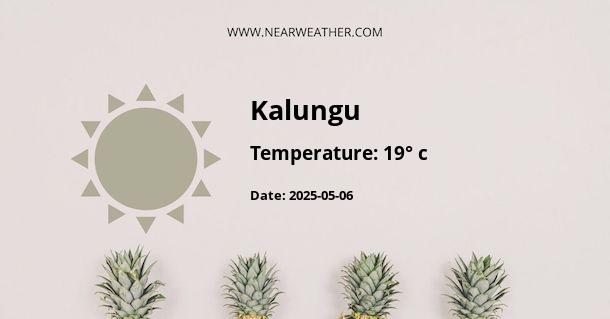Climate and Weather in Kalungu, Uganda
Kalungu, a district in the central region of Uganda, carries a tropical rainforest climate that is characterized by significant rainfall throughout the year. This climate type is a common feature among regions located near the equator, like Uganda. Here, we will delve into the specifics of Kalungu's climate and the weather patterns you can expect year-round.
Climate Classification
Kalungu's climate is categorized under the Köppen-Geiger climate classification as "Af," meaning a tropical rainforest climate. This classification signifies a high average annual temperature and consistent, significant rainfall throughout the year.
"The 'Af' classification in the Köppen-Geiger climate classification signifies a tropical rainforest climate. This category is characterized by a lack of a dry season with significant rainfall occurring in all months of the year." - Climate-Data.org
Average Temperature and Rainfall
Kalungu experiences high temperatures throughout the year due to its proximity to the equator. The average temperature ranges from 21°C (69.8°F) to 28°C (82.4°F). The warmest months are typically January, February, and March, while the coolest are usually June, July, and August.
In terms of rainfall, Kalungu receives an average annual rainfall of approximately 1200mm. The wettest months are typically April, May, and November, characterized by substantial downpours, while the driest months are January and February.
Humidity and Sunshine
Humidity levels in Kalungu are generally high throughout the year due to the consistent rainfall. The average annual relative humidity is around 80%. Despite the high humidity, Kalungu also enjoys a fair amount of sunshine throughout the year, with an average of 5-6 hours of sunshine per day.
Seasonal Weather Patterns
Despite the consistent rainfall, Kalungu does have two distinct rainy seasons and two dry seasons. The ‘long rains’ typically occur from March to May, and the ‘short rains’ from October to December. The dry seasons occur in the months of January to February and from June to September.
Weather Impact on Agriculture
Given the significant rainfall and stable temperatures, Kalungu is well-suited for agriculture, with the main crops including coffee, bananas, beans, and maize. The consistent climate enables year-round cultivation, making agriculture a primary source of livelihood for the local residents.
Climate Change Impact
Like many regions around the globe, Kalungu is experiencing the effects of climate change. Increased temperatures and varying rainfall patterns threaten agricultural yield and water availability, impacting the livelihoods of the district's inhabitants. Efforts are being made to mitigate these impacts, including the introduction of climate-resilient crops and improved farming practices.
"Climate change is a global issue, and Kalungu is no exception. The district is feeling the effects through increased temperatures and varying rainfall patterns, which have direct impacts on agriculture and water availability." - Climate Reality Project
Conclusion
Understanding the climate and weather patterns of Kalungu is critical for planning travel, agricultural activities, and climate change mitigation strategies. The tropical rainforest climate offers stable, high temperatures and significant rainfall throughout the year, creating a lush, green environment. However, the impacts of climate change pose new challenges that require innovative and sustainable solutions.
A - Kalungu's Latitude is -0.169690 & Longitude is 31.758471.
A - Weather in Kalungu is 15° today.
A - Climate Conditions in Kalungu shows overcast clouds today.
A - Humidity in Kalungu is 95% today.
A - Wind speed in Kalungu is 3.71 km/h, flowing at 266° wind direction. today.
